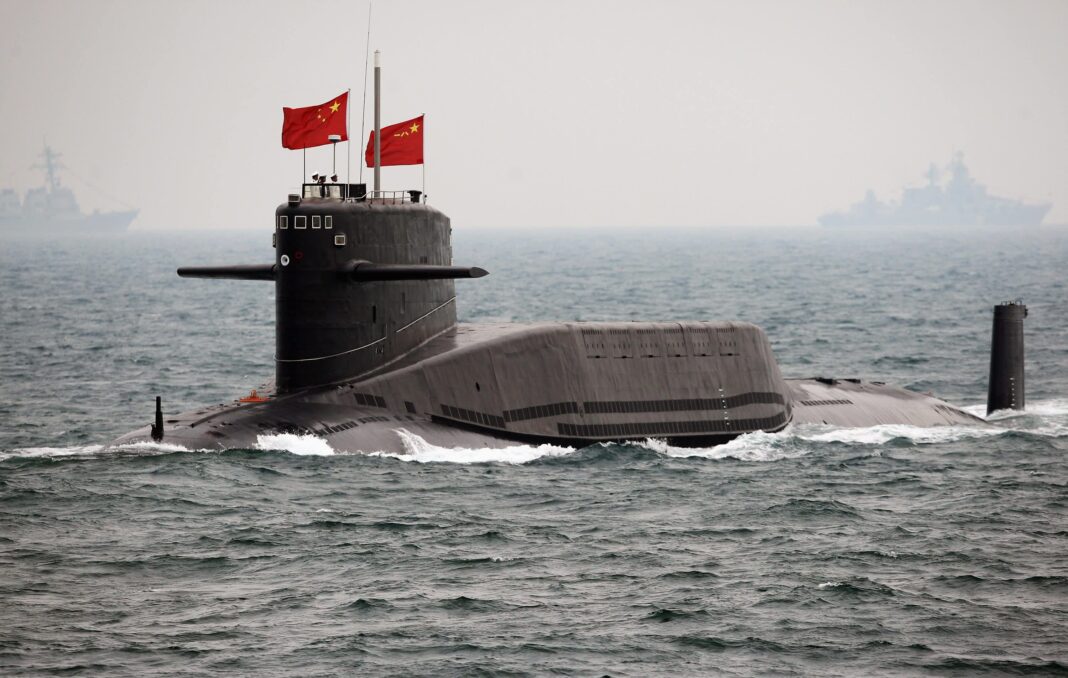A Pentagon report claims that for the first time China is keeping at least one nuclear-armed ballistic missile submarine permanently at sea. The very claim is enough to increase worry for the Western allies as they try to counter Chinese military might in the Indo-Pacific, and specifically, the South China Sea.
A Western defense assessment of China’s military said China’s fleet of six Jin-class ballistic missile submarines were operating “near-continuous” patrols from Hainan Island into the South China Sea, equipped with a new, longer-range ballistic missile.
The 174-page report was released in late November. It shows crucial improvements in Chinese capabilities, according to four regional military attaches familiar with naval operations and five other security analysts. According to analysts, the new Chinese submarine patrols imply improvements in many areas, including logistics, command and control, and weapons. They also show how China starting to operate its ballistic missile submarines like other countries that have submarine fleets for decades.
Their “deterrence patrols” allow them to threaten a nuclear counterattack even if land-based missiles and systems are destroyed. Under classic nuclear doctrine, that deters an adversary from launching an initial strike. General Anthony Cotton, the commander of the U.S. Strategic Command, was quoted as saying at a Congressional hearing in March that The Chinese subs are now being equipped with a third-generation missile, the JL-3. With an estimated range of more than 10,000 kilometres (6,214 miles) and carrying multiple warheads, the JL-3 allows China to reach the continental United States from Chinese coastal waters for the first time, the Pentagon report notes.
The Chinese defense ministry did not comment.
China’s first attempt at an indigenous SSBN (nuclear-powered, ballistic missile-carrying submarine) resulted in a single Xia-class submarine that suffered from technical problems. The vessel allegedly never left port with nuclear weapons on board. The successor Jin-class (Type 094), which carries the JL-2 SLBM, represents a significant improvement. A recent Office of Naval Intelligence report notes that the Jin-class marks China’s “first credible at-sea second-strike nuclear capability.” Similarly, the Department of Defense’s 2016 Annual Report to Congress on China’s military states that the Jin-class/JL-2 platform “represents China’s first credible, sea-based nuclear deterrent.” The basic theory of an SSBN is that it can hide in the vastness of the ocean and therefore it is almost impossible to predict where it may be or it may not be possible to detect it at all.
Choke points can be exploited to maximize the ability to detect and track enemy SSBNs. In order to strike the continental United States with its JL-2 missiles, China’s SSBNs must have the ability to sail from their home base through several crucial chokepoints and reach the mid-Pacific Ocean without being detected.1 The Office of Naval Intelligence reports that it is likely that at least five ¬Jin-class submarines are necessary to maintain a continuous peacetime presence. According to Department of Defense’s 2019 China Military Report, there are four Jin-class SSBNs currently operational and another two being outfitted at Huludao Shipyard. The effort and cost associated with the development of the Jin-class signals that China’s leaders believe that to maintain the country’s nuclear capability “at the minimum level required for maintaining its national security” requires a survivable seaborne deterrent to complement their land-based nuclear force. In contrast, the West keeps a formidable submarine fleet in the Pacific. The figure may be augmented in the near future when the AUKUS partnership delivers the promised nuclear submarines to Australia. Under AUKUS, US and British nuclear-powered subs will be deployed out of Western Australia from 2027.The US Navy keeps about two dozen nuclear-powered attack subs based across the Pacific, including in Guam and Hawaii, according to the Pacific Fleet. Such submarines are the core weapons for hunting ballistic missile subs, backed by surface ships and P-8 Poseidon surveillance aircraft. The US also has seabed sensors in key sea lanes to help detect submarines.
For the time being the Western forces could probably cope with the situation, but they may have to increase their military presence once and if the Chinese submarine patrols become permanent and then expand. The time span being talked about is the next decade or so. China’s rapid expansion of its nuclear forces mean U.S. strategists must contend with two “nuclear peer adversaries” for the first time, along with Russia. And that will be of concern to the United States because it will stretch US defences. With the advent of the JL-3 missile, Chinese strategists can expect to keep their ballistic missile subs in the deep waters of the South China Sea – which China has fortified with a string of bases – rather than risk patrols in the Western Pacific. Russia is thought to keep most of its 11 ballistic missile submarines largely in bastions off its Arctic coasts, while US, French and British boats roam more widely.

